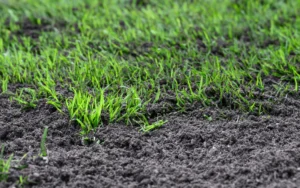Australia’s unique climate zones mean that no single approach to lawn care suits every backyard. Whether you’re living in the humid subtropics of Brisbane, the Mediterranean climate of Perth, or the dry inland of Alice Springs, the way you water your lawn can make or break its health. Understanding the differences between regions helps you make better decisions for your grass – and your water bill.
Why Location Matters in Lawn Watering
Australia’s climate is famously diverse. From tropical storms in the north to frosty mornings in Tasmania, the variation in weather across regions demands tailored watering habits. It’s not just about how much you water – it’s also about when, how often, and for how long.
Key factors that differ by region:
- Rainfall levels – Some areas get heavy, consistent rain; others are dry most of the year.
- Temperature – Hotter regions see more evaporation, which affects how quickly lawns dry out.
- Soil type – Sandy soils drain fast, while clay holds water longer.
- Humidity – High humidity reduces evaporation, while dry air increases it.
- Water restrictions – Local councils impose different watering rules, especially during droughts.
Let’s break down some of the major Australian regions and explore how they differ.
Tropical and Subtropical Regions (e.g., Northern QLD, NT, Northern NSW)

Tropical climates, like those in Cairns or Darwin, are characterised by high humidity and distinct wet and dry seasons. Subtropical areas like Brisbane also experience warm, humid weather but with more defined seasonal changes.
Watering Tips for the Tropics:
- Wet season: Reduce watering – nature’s got it covered. Overwatering in this period can lead to fungal diseases.
- Dry season: Increase frequency slightly, but aim for deep, infrequent watering rather than daily sprinkles.
- Time of day: Water early in the morning when it’s cooler to reduce evaporation.
- Grass type: Buffalo and Zoysia grasses thrive in this region and handle humidity well.
Lawn watering systems in these areas should be adaptable. Using moisture sensors can help prevent unnecessary watering during wet spells.
Temperate Zones (e.g., Sydney, Melbourne, Adelaide)
Temperate climates enjoy relatively mild conditions year-round, although southern cities like Melbourne and Adelaide can swing between hot summers and chilly winters.
Watering Tips for Temperate Regions:
- Seasonal changes: Adjust watering routines across the year. You’ll need more in summer, but can reduce significantly in winter.
- Soil drainage: These areas often have loamy soils that retain water well, so avoid overwatering.
- Water in moderation: Twice a week is often enough, depending on rainfall.
- Grass type: Tall fescue, ryegrass, and couch varieties do well here.
Because temperate zones can experience long dry spells followed by rain, keeping an eye on the forecast and using timers on your irrigation system can help reduce waste.
Mediterranean Climate (e.g., Perth, parts of SA)
Perth and surrounding areas are hot and dry in summer, with cool, wet winters. This means your lawn’s watering needs change dramatically between seasons.
Watering Tips for Mediterranean Climates:
- Summer: Water deeply and early in the morning. Limit to twice a week if restrictions allow, but make those sessions count.
- Winter: You may not need to water at all, depending on rainfall.
- Soil type: Sandy soils are common here and don’t retain water well – use soil wetting agents to improve absorption.
- Grass type: Kikuyu, couch, and drought-tolerant buffalo grasses work well.
Consider switching to climate-responsive controllers that adjust watering based on real-time weather data to better manage your usage across seasons.
Arid and Semi-Arid Regions (e.g., Central Australia, Inland WA/NSW)

These areas see high temperatures, low rainfall, and extreme evaporation rates. Lawns here can be tough to maintain without strategic watering and smart grass choices.
Watering Tips for Arid Zones:
- Water early: Aim for early morning watering to reduce loss through evaporation.
- Deep, infrequent watering: Water deeply once or twice a week to encourage deep root growth.
- Mulch where possible: Organic mulch around garden beds can help retain moisture and reduce the heat island effect.
- Grass type: Choose drought-resistant varieties like hybrid bermuda or buffalo.
Water conservation is key in arid areas. Check for leaks in irrigation systems and use drip lines for garden beds to keep water use under control.
Cool Climate Areas (e.g., Tasmania, High-altitude Regions)
Cooler areas, including parts of Tasmania and the Southern Highlands, have lower evaporation rates and consistent rainfall in many months of the year.
Watering Tips for Cooler Climates:
- Less frequent watering: Lawns here generally need less watering overall, especially in winter.
- Watch for overwatering: With cooler temps and more rain, it’s easy to give your lawn too much water.
- Adjust for frost: Avoid watering late in the day during winter to prevent frost damage.
- Grass type: Ryegrass, Kentucky bluegrass, and fescue are common cool-season grasses.
Winter dormancy can also trick homeowners into thinking the lawn is dead when it’s just hibernating. Don’t overcompensate with extra water.
Final Thoughts: One Size Doesn’t Fit All
Australia’s regions are too different to apply a blanket rule when it comes to lawn watering. Your approach should be shaped by your location’s climate, soil, rainfall, and seasonal behaviour.
Key takeaways:
- Tropical areas need flexible watering routines based on wet and dry seasons.
- Temperate zones benefit from balanced watering schedules and grass varieties that suit the shifting seasons.
- Mediterranean regions like Perth call for drought-smart strategies and sandy soil management.
- Arid zones require deep, infrequent watering with drought-resistant grass types.
- Cool climates have minimal watering needs but require care during frosty months.
By understanding what your specific region demands, you’ll avoid common mistakes like overwatering or shallow root development – and save time, money, and water in the process.
So next time you’re tempted to set the sprinkler and walk away, take a moment to consider where you live – your lawn will thank you.





